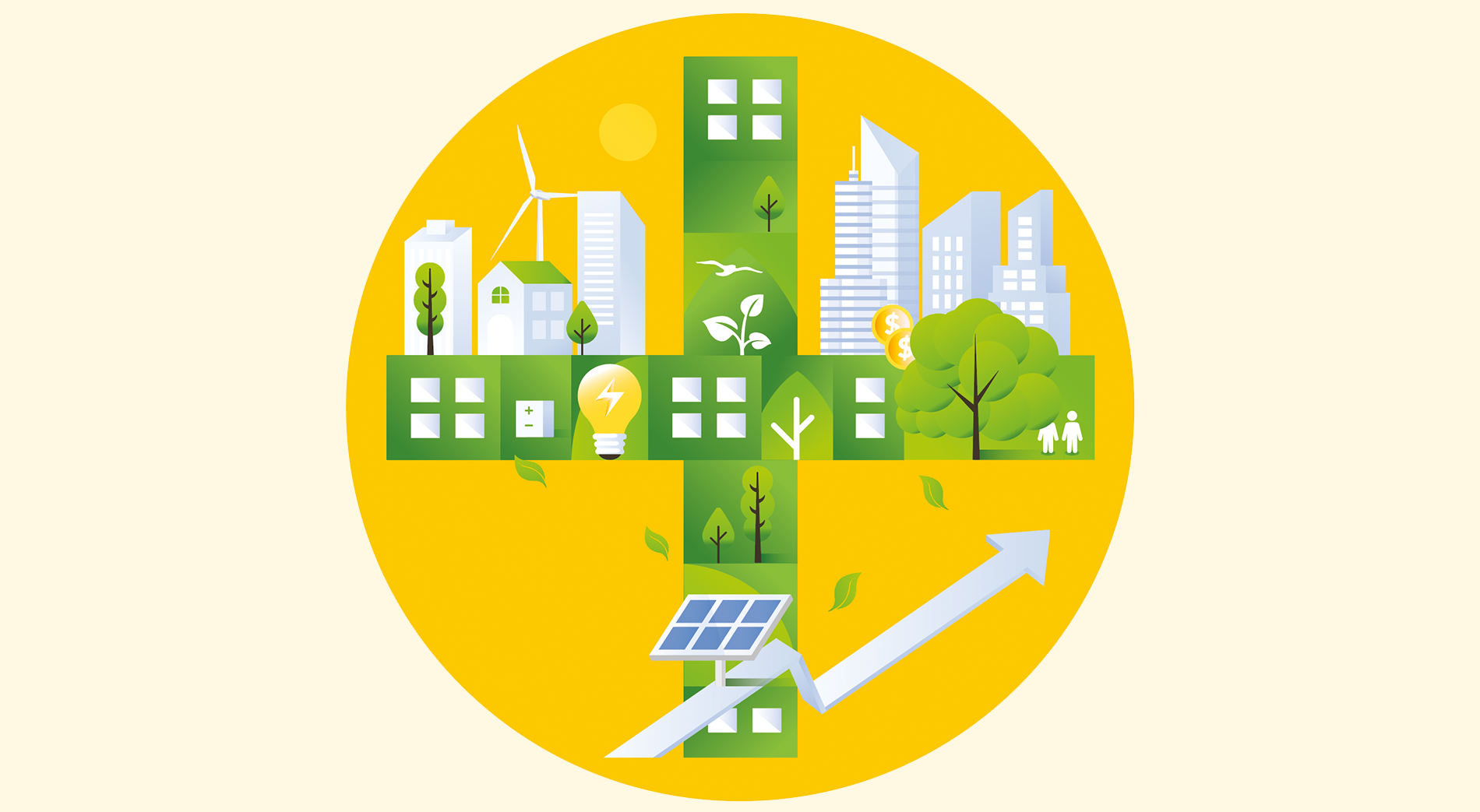Reappraising the relationship between economic activity and the natural world can inspire innovation and power growth.
Years ago, in the lowland plains of Venezuela, I worked on a ranch and wildlife refuge. The ranch owners planned to set aside a portion of the land for ecotourism. In nature-based tourism, an obvious relationship exists between biodiversity and business. Now, more than 30 years later, the economic relationship between nature and business extends beyond tourism. An increasing number of major companies stride toward carbon net zero and nature-positive solutions – designing processes and operations that help repair and restore ecosystems. The two business models fit together since restored ecosystems capture carbon; yet achieving net zero challenges how we produce, consume, and travel. These challenges, ensconced in the United Nations’ Sustainable Development Goals (SDGs), inspire companies to innovate, create value, and build competitive advantage.
Early ecotourism endeavors took a lead role in nature-positive business. (Maybe that’s where we developed the collective awareness that societies and economies tie to and depend on nature and biodiversity.) In any case, the concepts of nature-positive business and net-zero strategies came ready to nourish new ideas.
Reduced footprint, increased handprint
Many companies now seek opportunities to reduce their negative footprints and increase their positive impact – their social and environmental ‘handprints.’ In 2023, S&P Global Sustainable1 published research entitled ‘How the world’s largest companies depend on nature and biodiversity.’ It declared that 85% of companies in the S&P Global 1200 – an index that covers the 1,200 largest companies across North America, Europe, Asia, Australia and Latin America – have “a significant dependency on nature across their direct operations.” It added that the larger S&P Global Broad Market Index (BMI), comprising about 14,000 companies across developed and emerging markets, shows a similar relationship to nature: “68% of companies in this index have a significant dependency on nature across their direct operations,” found the analysts.
These percentages sound high only if you try to separate the built environment from the natural world. Many products depend directly or indirectly on ecosystem services. When it rains, for example, it rains over an entire area with no distinction between built and natural. The rainwater offers value to the environment and to the businesses that depend on water. Ecosystems ‘serve’ people and businesses in many ways. They provide habitats for wildlife, which enable ecotourism companies to thrive. Many enterprises depend on forest ecosystems for timber and wood fiber, and, less directly, to absorb and filter rainwater, sequester carbon, control soil erosion, and maintain genetic diversity. River systems channel stormwater runoff, spin turbines for electricity, and offer places for outdoor recreation. Wetlands, especially along coastlines, mitigate floods and provide protection from severe storms. Companies both impact and depend on ecosystems. Understanding the relationship between business and the environment empowers business leaders to mitigate risks and create opportunities.
Product and process design
In ecotourism’s early days, all the integrated conservation and development projects functioned as works-in-progress; they appeared disconnected from the financial realm of Wall Street. The pioneers of the time held high aspirations for conservation finance but didn’t always meet them, and their ideas sometimes took a shellacking by the establishment.
Nevertheless, business started to grasp the interconnection between natural resources (forestlands, wetlands, water, fisheries, minerals) and financial investments. Modern companies leverage this awareness to design products and processes.
Subaru, for example, manufactures its products in zero-waste-to-landfill production plants. Since 2004, its assembly plant at Lafayette, Indiana, has avoided sending waste to landfill. To achieve this goal, the plant brought in an outside waste management company to inventory what they disposed of, where, and how. The company’s underlying Kaizen, or continuous improvement, philosophy stimulated circular thinking. Soon, defective plastic polymer bumpers found their way to a grinder and then back to the molding machine. Employees dumped food waste from the cafeteria into a composter. Later, they used the organic compost to enrich the soil in their home gardens. The factory’s focus on waste reduction and environmental stewardship reduced risks and saved the facility $1-2 million a year, and the National Wildlife Federation recognized Subaru’s Indiana plant as a backyard wildlife habitat, enhancing its reputational value.
Unilever, under CEO Paul Polman’s leadership (2009-2019), pursued a Sustainable Living Plan to rediscover its purpose. During the process, Unilever achieved great financial growth and reduced Scope 1 and 2 greenhouse gas (GHG) emissions from their operations. They aimed to cut food waste in half by 2025 and engaged employees in company-wide food-waste warrior programs. Like Subaru, Unilever understood that both environmental and financial success required employee participation. Searching for nature-positive solutions emerged as a powerful productivity program. In addition, Unilever committed to protecting and regenerating land, forests and oceans. The company took a nature-positive approach to sustainability, which resulted in higher productivity and higher stock prices.
In 2023, Salesforce, the customer relationship management (CRM) software company, published its Nature Positive Strategy to “articulate our company’s relationship with nature and how we plan to play our part in realizing our commitment to a net zero, nature positive future rooted in people and climate justice.” The strategy aims to “reduce environmental impacts, restore ecosystems at scale, and accelerate the nature-positive movement.” Salesforce aims to inspire other companies to integrate the natural world into their environment and climate strategies, and the firm is helping its customer base navigate their own net-zero, nature-positive journeys. It makes Salesforce a leader in the nature-positive economy.
Companies like Subaru and Unilever use sustainability to reduce waste and haul-away fees and reduce energy and water consumption, which saves them money. Savvy companies also use social and environmental considerations to create efficient processes and increase profit margins. But what about the revenue side? How do business leaders use the natural world to drive innovation?
Internalizing environmental externalities drives innovation
When companies look at their work through a sustainability lens, they unleash innovation and uncover potential value. Nature-positive thinking leads to new ways of thinking about business and biodiversity. Biodiversity protection ceases to be a cost of operations and becomes a source of inspiration and innovation. It leads to lucrative ways to do things. Once leaders understand how businesses depend on ecosystem services, they look to plants and animals for inspiration. Biomimicry – design modeled on biological structures and processes – adopts nature-inspired ideas to solve business challenges and protect biodiversity. Creative companies leverage biomimicry to discover nature-positive ways to accomplish goals and create more value.
Janine Benyus, co-founder of the Biomimicry Institute, explains that designers study nature to discover ways to mimic form, processes, or whole ecosystems. This ties into the circular economy. As Benyus puts it: “There should be no such thing as a byproduct in a manufacturing facility that goes to landfill.” Subaru mimicked an ecosystem’s circularity by approaching its production plants from a nature-based, ‘waste-is-food’ perspective. In nature, waste from one process becomes food for another, in an ongoing cycle. An animal dies, decomposers feed on it and produce waste, which nourishes the soil, which enables vegetables to grow, which feed the same kind of animals as the one that died. Similarly, Subaru transformed its production process into a circle, where the waste from one process transformed into ‘food’ for another. You can discover all sorts of new opportunities when you bring a biologist to the table.
In a similar example, Biome Renewables identified inefficiencies in wind turbines and wondered how to improve them. The inefficiencies come from an airflow problem at the blade roots known as “root leakage.” This pulls potential power away from the blades and creates turbulence. To solve it, according to Biome Renewables, they “turned to two of the natural world’s most effective ways of moving through fluids: the kingfisher and the maple seed.”
A kingfisher’s beak pierces water with minimal disturbance, cutting through water at a steady rate. When maple seeds fall from a tree, they rotate like a helicopter’s rotor blades, descending through a pattern of least resistance. Biome Renewables designed its PowerCone wind-turbine retrofit based on principles found in the maple leaf and the kingfisher. Like the kingfisher’s beak, it directs wind “from the root to outer spans of the blade and channels it smoothly onto its surface,” while its blades mimic the energy efficiency of the maple seed. The effect is to increase the turbine’s capacity factor, maximizing its performance.
Another example brings us to coastal ecosystems, which protect wetlands and provide a buffer from storms. Coastal developments often disrupt or displace these ecosystems. To help stabilize coastal environments, Tel Aviv-based Econcrete created a low-carbon marine concrete that mimics nature and creates habitats for marine life, aiming to “build a future where marine ecosystems and infrastructure work symbiotically for the benefit of the environment.” The company designed its material for urban waterfronts, ports and offshore energy platforms, using a chemical balance and textured surfaces that support marine life such as oysters, corals and barnacles. These organisms bind to the Econcrete, strengthening the built structures, in a process the firm calls bioprotection. Its molds even create ecological niches, resulting in an uplift in marine biodiversity.
Nature positive approaches are also driving innovation in fields such as fashion. Bolt Threads, a biomaterials company, offers an innovative approach to materials for the fashion industry. Working with brands including Adidas, Kering, Lululemon and Stella McCartney, the firm sources materials from the natural world and then seeks ways to turn them into low-impact – but fashionable – attire and accessories. It developed Mylo, a flexible material that resembles animal leather but is made from mushroom mycelium, grown in a vertical farm powered by renewable energy. The material is sold to luxury brands to make everything from wallets and handbags, to yoga mats and sneakers. Bolt Threads also makes Microsilk, a fiber based on the silk proteins spun by spiders. The company produces the silk proteins, spins them into fibers, and uses them to make fabrics and garments. The process creates low environmental impacts and generates a product that has the potential to biodegrade.
The power of nature-positive ideas
Nature-positive strategy transforms the way work gets done. It requires a suite of competencies including systems thinking, design thinking and circularity. It drives people leadership practices that engage employees throughout the enterprise, from management to health and safety, engineering, product design, supply-chain management, logistics and sales. And it thrives on a nature-positive mindset, where business leaders turn to nature for inspiration and use social and environmental issues to drive innovation, growth and profits.
One of the fascinating things about the early days of a mindset shift, such as that toward nature-positive business and biomimicry, is seeing the sparks of emerging ideas. When they catch fire, they can endure for generations.



